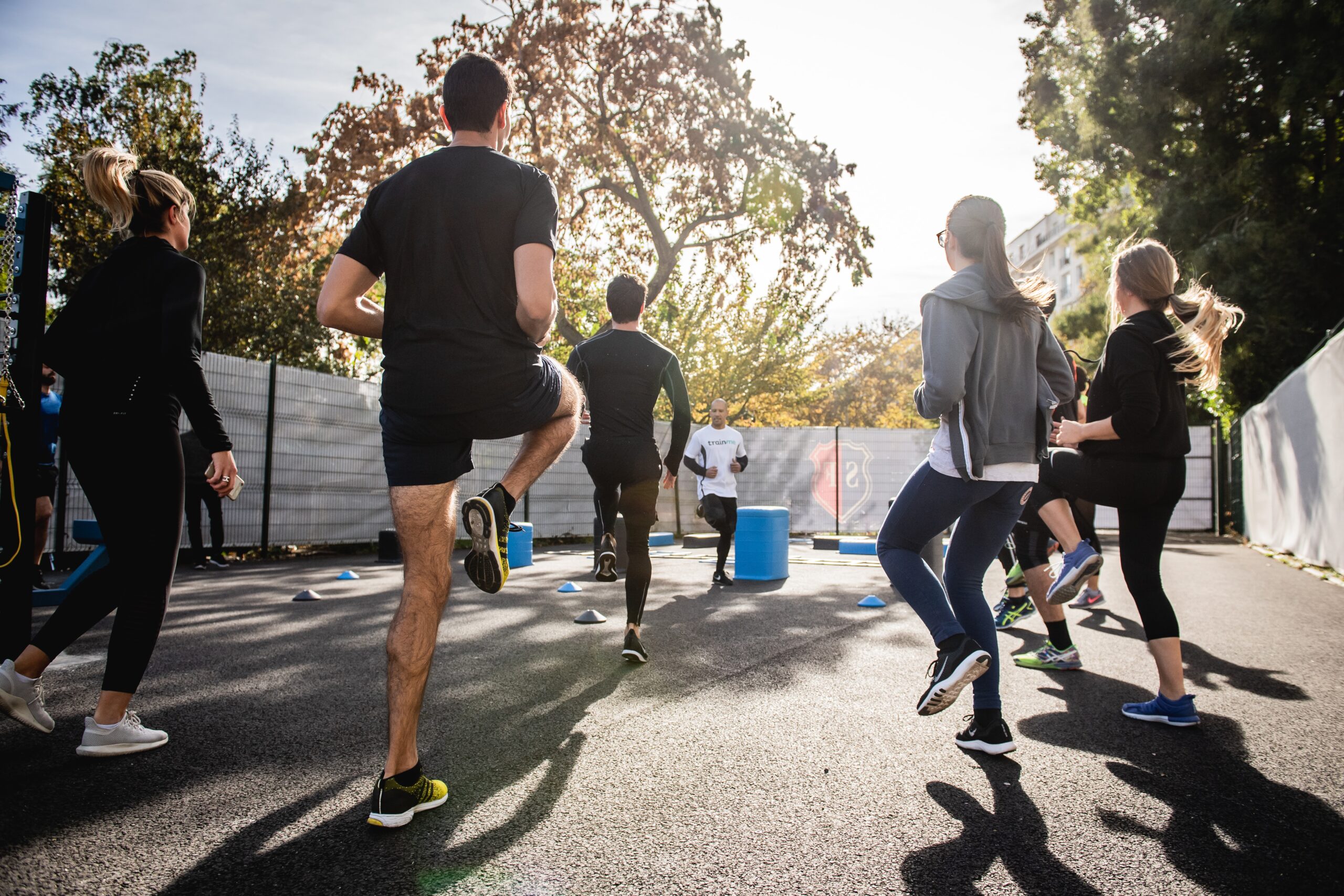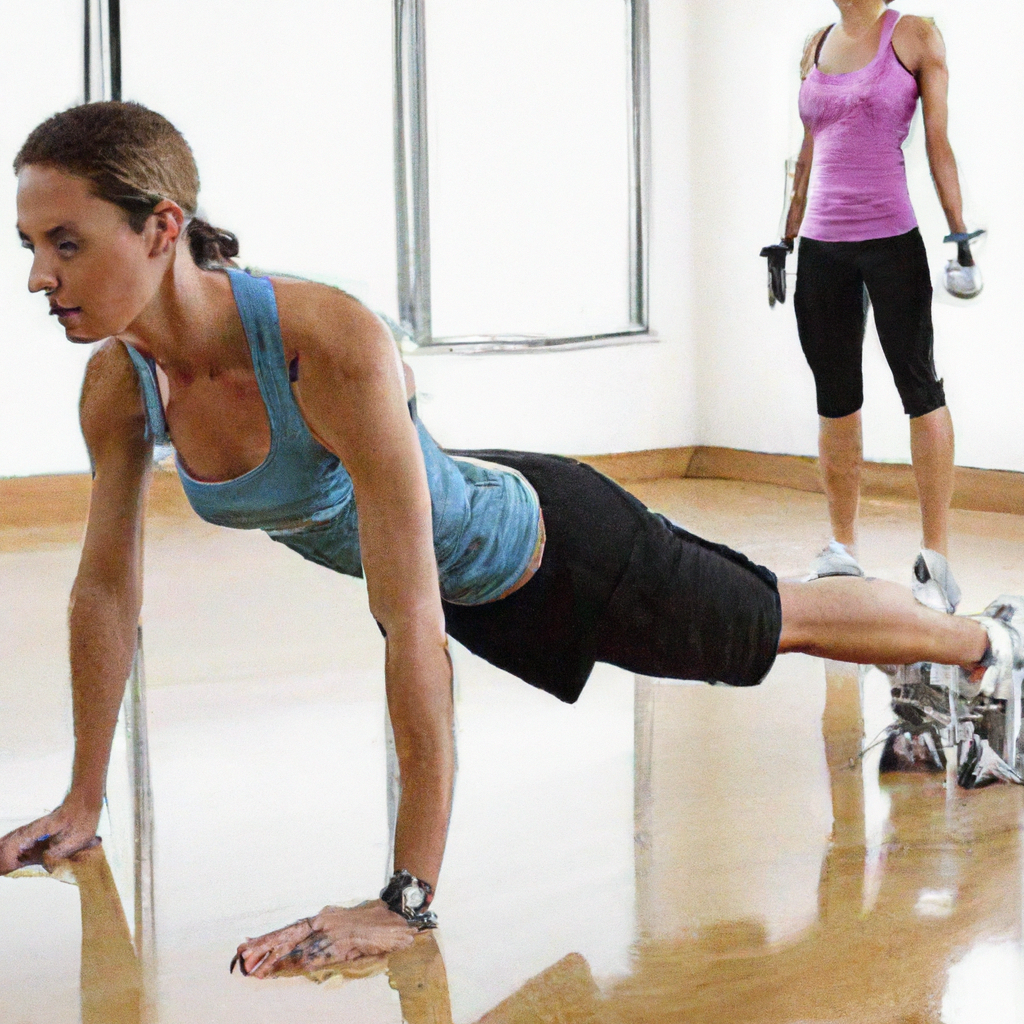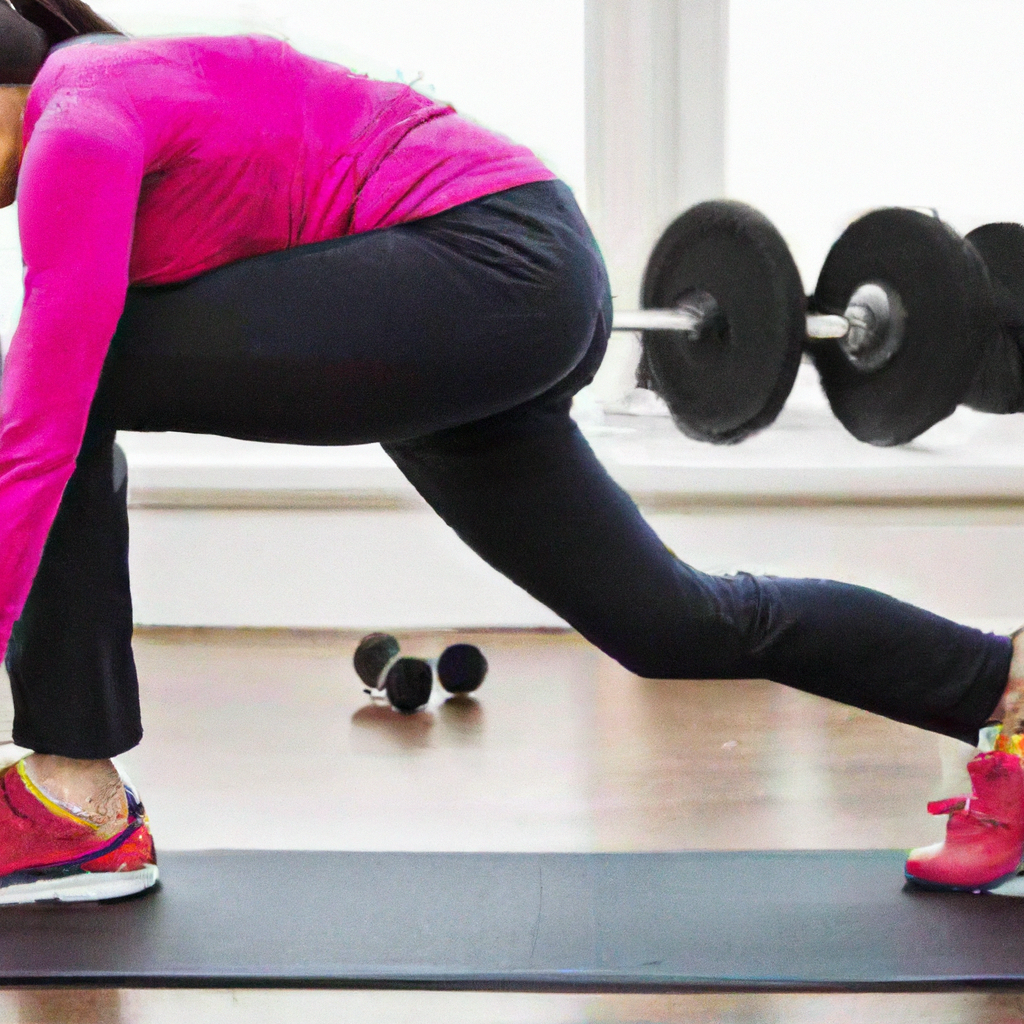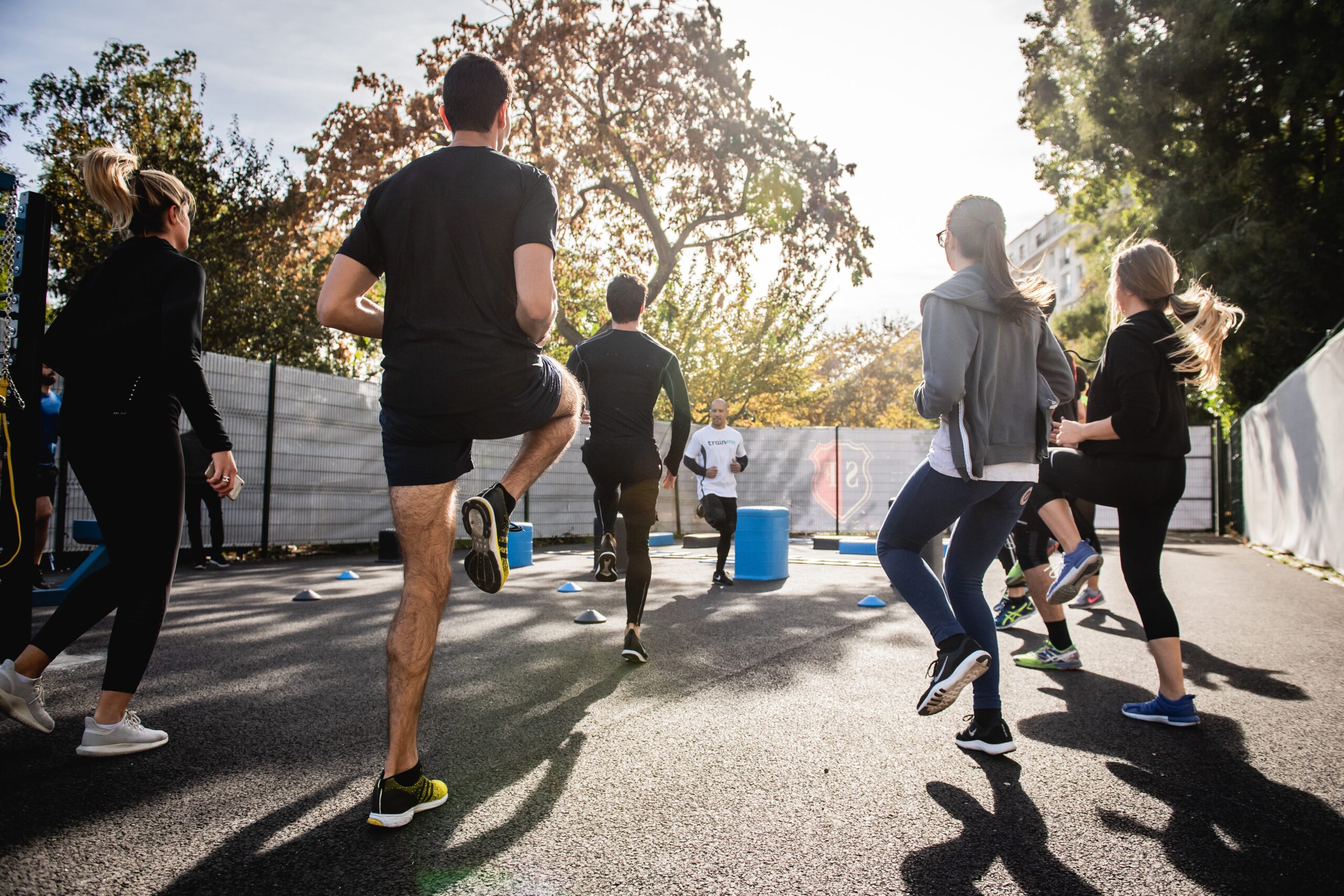If you’re looking to increase your strength without having to rely on gym equipment or weights, bodyweight exercises are the perfect solution. By utilizing the resistance of your own body, you can effectively build muscle and improve your overall strength. In this article, we will explore various bodyweight exercises that can help you achieve your fitness goals. From push-ups and squats to planks and lunges, these exercises will not only challenge your muscles but also improve your balance and flexibility. Get ready to discover the power of bodyweight exercises and take your strength training to the next level.

This image is property of images.unsplash.com.
Understanding the Basics of Bodyweight Exercises
What are bodyweight exercises?
Bodyweight exercises, as the name suggests, are exercises that use the weight of your own body as resistance. These exercises do not require any external equipment or weights, making them a convenient and accessible form of strength training. By utilizing your own bodyweight, you can increase your strength, build muscle, and improve your overall fitness.
Importance of bodyweight exercises for strength training
Bodyweight exercises are essential for strength training as they target multiple muscle groups simultaneously, providing a full-body workout. These exercises help build both muscular strength and endurance. Additionally, bodyweight exercises improve balance, flexibility, and coordination, further enhancing overall fitness and athletic performance.
How bodyweight exercises contribute to overall fitness
Incorporating bodyweight exercises into your fitness routine offers numerous benefits beyond strength training. These exercises contribute to overall fitness by improving cardiovascular health, increasing flexibility, and boosting metabolism. Moreover, bodyweight exercises can be modified to suit different fitness levels, allowing individuals to progress at their own pace and continually challenge themselves.
Advantages of Bodyweight Exercises for Strength Training
No need for gym membership or expensive equipment
One of the greatest advantages of bodyweight exercises is the ability to perform them anywhere, anytime, without the need for a gym membership or expensive equipment. Whether you’re at home, traveling, or outdoors, you can engage in a full-body workout using just your own bodyweight. This not only saves you money but also ensures that you have no excuses to skip a workout.
Can be performed anywhere, anytime
Unlike exercises that require machines or weights, bodyweight exercises are incredibly versatile and can be performed in any location. Whether you have a small living room, a backyard, or even a hotel room, you can engage in effective strength training using only your bodyweight. This makes maintaining a consistent fitness routine more attainable and convenient for individuals with busy schedules.
Full body workout in one exercise
Bodyweight exercises, such as push-ups and squats, engage multiple muscle groups simultaneously, providing a comprehensive full-body workout. These compound exercises not only target major muscle groups like the chest, back, legs, and core but also engage smaller stabilizing muscles. This holistic approach ensures that you develop overall strength and balance throughout your body.
Improves balance, flexibility, and coordination
Beyond building strength and muscle, bodyweight exercises contribute to improving balance, flexibility, and coordination. By focusing on bodyweight movements that require proper form and control, you develop a greater sense of balance and stability. Moreover, the wide range of bodyweight exercises enhances flexibility and mobility, making daily activities easier and reducing the risk of injury.
Effective Bodyweight Exercises for Increasing Strength
Push-ups
Push-ups are a classic bodyweight exercise that targets the chest, shoulders, triceps, and core muscles. To perform a push-up, start in a high plank position with your hands shoulder-width apart, lower your body until your chest nearly touches the ground, and then push back up to the starting position. As you progress, you can modify push-ups by elevating your feet or adding variations like diamond push-ups or decline push-ups to increase difficulty.
Squats
Squats are a compound exercise that primarily targets the muscles of the lower body, including the quadriceps, hamstrings, and glutes. To perform a squat, stand with feet shoulder-width apart, lower your body by bending at the knees and hips, keeping your chest up, and then return to the starting position. As you become more comfortable with squats, you can advance to pistol squats or weighted squats to further challenge your leg muscles.
Planks
Planks are an excellent exercise for strengthening the core, including the abs, back, and stabilizing muscles. Start by placing your forearms on the ground, elbows directly beneath your shoulders, and extend your legs behind you. Maintain a straight line from your head to your heels, engaging your core and keeping your hips in line with your spine. Hold the position for as long as possible, gradually increasing the duration as your core strength improves.
Bridges
Bridges target the glutes, hamstrings, and lower back muscles. To perform a bridge, lie on your back with knees bent and feet flat on the ground, hip-width apart. Lift your hips off the ground, engaging your glutes and core muscles, and hold the position for a few seconds before lowering back down. As you progress, you can incorporate single-leg bridges or add resistance by placing a weight or resistance band across your hips.
Pull-ups
Pull-ups are a challenging bodyweight exercise that primarily targets the muscles of the upper body, including the back, shoulders, and arms. To perform a pull-up, grip a sturdy overhead bar with palms facing away from you, hands slightly wider than shoulder-width apart. Pull your body up towards the bar until your chin is above the bar, and then slowly lower back down. If you are unable to perform a full pull-up, you can start with assisted pull-ups using a resistance band or a chair for support.
In-depth Analysis of Bodyweight Exercises for Strength
Push-ups: Technique and benefits
Push-ups are a versatile exercise that can be modified to suit different fitness levels. To perform a proper push-up, start in a high plank position with your hands shoulder-width apart. Lower your body by bending your elbows, keeping them close to your body, until your chest is nearly touching the ground. Push back up to the starting position, straightening your arms fully. Push-ups help build chest, shoulder, tricep, and core strength, while also improving stability and posture.
Squats: Technique and benefits
Squats are a fundamental bodyweight exercise that targets the lower body. Stand with feet shoulder-width apart, lower your body by bending your knees and hips, keeping your chest up, and then return to the starting position. Squats strengthen the quadriceps, hamstrings, glutes, and calves, while also improving mobility and stability in the hips and knees. Proper squat form is essential to prevent injury and maximize the benefits of this exercise.
Planks: Technique and benefits
Planks are a highly effective exercise for developing core strength and stability. Begin by placing your forearms on the ground, elbows directly beneath your shoulders, and extend your legs behind you. Maintain a straight line from your head to your heels, engaging your core and keeping your hips in line with your spine. Planks target the abs, back, and stabilizing muscles, helping to improve posture, reduce lower back pain, and enhance overall core strength.
Bridges: Technique and benefits
Bridges primarily target the glutes, hamstrings, and lower back muscles. Lie on your back with knees bent and feet flat on the ground, hip-width apart. Lift your hips off the ground, engaging your glutes and core muscles, and hold the position for a few seconds before lowering back down. Bridges strengthen the posterior chain, improve hip stability, and contribute to better posture. Additionally, bridges can help alleviate lower back pain and improve athletic performance.
Pull-ups: Technique and benefits
Pull-ups are a challenging exercise that requires upper body strength. To perform a pull-up, grip an overhead bar with palms facing away from you, hands slightly wider than shoulder-width apart. Pull your body up towards the bar until your chin is above the bar, and then slowly lower back down. Pull-ups target the muscles of the back, shoulders, and arms, building upper body strength, improving grip strength, and enhancing overall functional fitness.

This image is property of images.unsplash.com.
Formulating a Bodyweight Workout Plan
Determining your fitness level
Before starting a bodyweight workout plan, it is important to assess your current fitness level. This will help you tailor your exercises and progress at a suitable pace. Consider factors such as your strength, flexibility, endurance, and any existing injuries or limitations. If you are unsure, consult with a fitness professional or seek guidance from an experienced trainer.
Setting your strength training goals
Once you have determined your fitness level, set clear and realistic strength training goals. Whether you aim to increase the number of push-ups you can do, perform a full pull-up, or build overall strength, having specific objectives will guide your workout plan and keep you motivated. Consider both short-term and long-term goals to track progress and celebrate achievements along the way.
Planning your bodyweight exercise routine
Designing a well-rounded bodyweight exercise routine is crucial for achieving optimal results. Include a variety of exercises that target different muscle groups and incorporate both compound movements and isolation exercises. Aim for a balanced workout routine that includes exercises for the upper body, lower body, core, and cardiovascular system. Gradually increase the intensity and difficulty of your exercises over time to continue challenging your body and promoting growth.
Allocating rest periods between exercises
Rest periods play a vital role in bodyweight training as they allow your muscles to recover and adapt. When planning your workout routine, ensure that you allocate sufficient rest periods between exercises. The duration of these rest periods will depend on factors such as the intensity of the exercise, your fitness level, and your personal preference. Listen to your body and give yourself enough time to recover, but also avoid excessively long rest periods that may hinder progress.
Maintaining Proper Form and Safety During Bodyweight Exercises
Importance of proper form during exercise
Maintaining proper form during bodyweight exercises is essential for maximizing results and preventing injuries. Proper form ensures that the intended muscle groups are effectively targeted and reduces the risk of strains or imbalances. Focus on maintaining a neutral spine, engaging the appropriate muscles, and avoiding excessive momentum or swinging movements. If you are unsure about proper form, consider working with a qualified trainer or watching instructional videos to ensure you are performing each exercise correctly.
Common bodyweight exercise mistakes to avoid
While bodyweight exercises offer many benefits, certain common mistakes can hinder progress or increase the risk of injury. Some common mistakes to be aware of include improper alignment, using momentum instead of controlled movements, neglecting proper warm-up and cool-down, not breathing properly during exercises, and overexerting yourself without allowing for proper recovery. By being mindful of these mistakes and actively working to avoid them, you can ensure a safe and effective bodyweight workout.
Signs of overexertion or injury
It is important to listen to your body and be aware of signs of overexertion or injury during bodyweight exercises. Some indicators may include persistent pain or discomfort in joints or muscles, decreased range of motion, extreme fatigue or weakness, dizziness, or shortness of breath. If you experience any of these symptoms, it is crucial to stop the exercise, rest, and seek medical attention if necessary. Pushing through pain or ignoring signs of injury can lead to more severe problems and prolong recovery time.

This image is property of images.unsplash.com.
Increasing Intensity in Bodyweight Exercises for Progressive Overload
Understanding the concept of progressive overload
Progressive overload is the gradual increase in intensity, volume, or difficulty of exercises to stimulate further gains in strength and muscle development. By consistently challenging your body with increased demands, you encourage adaptation and improvement. Progressive overload can be achieved in bodyweight exercises by increasing repetitions, modifying body position or leverage, slowing down the movement, or introducing additional resistance through equipment like resistance bands or weighted vests.
How to safely increase intensity in bodyweight exercises
When increasing the intensity in bodyweight exercises, safety should always be a priority. Gradually progress in small increments, allowing your body to adapt and minimize the risk of injury. Rather than dramatically increasing the difficulty of an exercise, focus on improving form and control. Once you have mastered a certain level of difficulty, then progress to a more challenging variation. Continually assess your form and limit increasing intensity if it compromises your technique or causes pain.
Methods for increasing intensity: Adding more reps, performing the exercise slower, altering the movement pattern
There are several methods for increasing the intensity of bodyweight exercises. One approach is to add more repetitions to your sets, gradually increasing the total number of reps performed. Another effective method is to perform the exercise at a slower tempo, emphasizing the eccentric (lowering) phase of the movement. This deliberate and controlled pace increases time under tension, promoting muscle growth. Additionally, altering the movement pattern or trying more advanced variations of an exercise can provide a greater challenge and stimulate further strength gains.
Nutrition for Supporting Strength Gains in Bodyweight Exercises
Importance of nutrition in strength training
While bodyweight exercises are crucial for strength gains, proper nutrition plays an equally important role. To support muscle growth and recovery, ensure that your diet provides an adequate amount of protein, which is essential for repairing and building muscle tissue. Include a variety of nutrient-dense foods such as lean meats, fish, eggs, dairy, legumes, and plant-based protein sources. Additionally, consume a balanced diet rich in whole grains, fruits, vegetables, and healthy fats to provide the necessary energy and nutrients for optimal performance.
Recommended dietary components for strength gains
Besides protein, other dietary components are important for supporting strength gains. Carbohydrates are a vital source of energy for intense workouts and help replenish glycogen stores in muscles. Opt for complex carbohydrates like whole grains, fruits, and vegetables, which provide sustained energy throughout the day. Healthy fats, such as those found in avocados, nuts, and fatty fish, are also essential for hormone production and joint health. Lastly, staying well-hydrated by drinking an adequate amount of water is crucial for exercise performance and recovery.
Hydration and its role in exercise performance
Proper hydration is often overlooked but plays a critical role in exercise performance, including bodyweight training. Dehydration can lead to decreased strength, endurance, and overall exercise capacity. Aim to drink water regularly throughout the day, especially before, during, and after workouts. The amount of water needed varies depending on factors such as sweat rate, climate, and exercise intensity. Listen to your body’s signals of thirst and make it a habit to stay adequately hydrated to optimize your bodyweight exercise sessions.

Rest and Recovery in Strength Training with Bodyweight Exercises
Importance of rest and recovery in strength training
Rest and recovery are essential components of any strength training program, including bodyweight exercises. During periods of rest, the body repairs damaged muscle fibers, replenishes energy stores, and adapts to the demands placed upon it. Insufficient rest can lead to overtraining, increased risk of injury, and decreased performance. Prioritize quality sleep, allow for rest days in your workout schedule, and listen to your body’s cues for adequate recovery.
Effective rest and recovery methods: Sleep, nutrition, active recovery
Effective rest and recovery methods encompass various aspects of your lifestyle. Quality sleep is paramount for muscular repair and overall recovery. Aim for 7-9 hours of uninterrupted sleep each night. Adequate nutrition, as previously mentioned, supports recovery by providing essential nutrients and promoting muscle repair. Additionally, incorporating active recovery, such as light stretching, gentle movement, or low-intensity exercise, can improve circulation, reduce muscle soreness, and optimize recovery between intense bodyweight workouts.
Tracking Your Progress in Bodyweight Strength Training
Methods for tracking progress: Performance logs, recording videos, using fitness apps
Tracking your progress is essential for monitoring improvements and staying motivated in your bodyweight strength training journey. Performance logs can help you record the number of repetitions, sets, or the duration of each exercise. By tracking these variables, you can identify trends, compare your performance over time, and set goals for improvement. Recording videos of your workouts allows you to review and assess your form, ensuring that you are maintaining proper technique. Additionally, fitness apps and wearable devices can provide data on metrics such as heart rate, calories burned, and workout duration, allowing for a more comprehensive overview of your progress.
Evaluating progress and adjusting your workout plan accordingly
Regularly evaluating your progress is crucial for ensuring that you are on track and making consistent gains. This evaluation involves comparing current performance to previous benchmarks, tracking changes in strength, endurance, and form, and assessing any adaptations in your body composition. Based on these evaluations, you can make informed decisions on whether to increase the intensity, modify exercises, or adjust your workout plan to continue progressing towards your goals.
Celebrating progress and setting new goals
Recognizing and celebrating your progress is an important aspect of maintaining motivation and sustaining a long-term bodyweight exercise routine. Take the time to acknowledge your achievements, whether it be reaching a new milestone in the number of repetitions or executing a more challenging exercise variation. Celebrate your victories, no matter how small, as they signify progress towards a stronger and healthier you. After celebrating, set new goals to keep pushing yourself and continue growing both physically and mentally.


